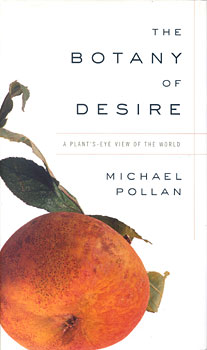

His home is more of a landscape than a carefully defined garden. Michael Pollan gardens with a deft touch. Ketzel Levine spoke with him there for the first of two reports. Much of his writing has drawn from his experiences in his Connecticut garden.


Pollan is a contributing writer for The New York Times Magazine. In his new book, “The Botany of Desire,” Michael Pollan suggests that the plant world’s most obliging suitor is man, and the plants that have figured out how best to keep people interested are nature’s greatest success stories. The most obvious is the flower, designed to attract pollinators, typically bees. Plants have evolved complicated strategies to ensure their survival. Weaving fascinating anecdotes and accessible science into gorgeous prose, Pollan takes us on an absorbing journey that will change the way we think about our place in nature.Ī documentary film based on The Botany of Desire premiered on PBS in October 2009.Evolution of plants as explained in Michael Pollan’s new book, Botany of Desire Morning Edition (NPR), June 4, 2001 The sweetness of apples, for example, induced the early Americans to spread the species, giving the tree a whole new continent in which to blossom. For, just as we’ve benefited from these plants, the plants, in the grand co-evolutionary scheme that Pollan evokes so brilliantly, have done well by us. In telling the stories of four familiar plant species that are deeply woven into the fabric of our lives, Pollan illustrates how they evolved to satisfy humankinds’s most basic yearnings - and by doing so made themselves indispensable.

In The Botany of Desire, Michael Pollan argues that the answer lies at the heart of the intimately reciprocal relationship between people and plants. How could flowers, of all things, become such objects of desire that they can drive men to financial ruin? Three and a half centuries later, Amsterdam is once again the mecca for people who care passionately about one particular plant - thought this time the obsessions revolves around the intoxicating effects of marijuana rather than the visua. In 1637, one Dutchman paid as much for a single tulip bulb as the going price of a town house in Amsterdam.


 0 kommentar(er)
0 kommentar(er)
